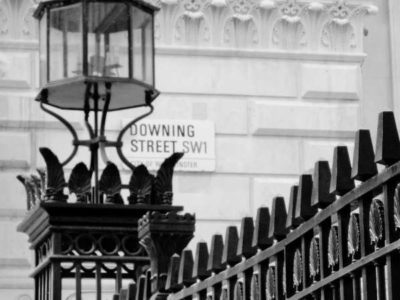The annual percentage change for average UK house prices was 12.6% in the year to October 2022, compared with 9.9% in the year to September 2022 and 12.9% in the year to August 2022.
The average UK house price annual percentage change was 12.6% in the year to October 2022, up from 9.9% in the year to September 2022.
The increase in annual house price percentage change was mainly because average UK house prices decreased by £6,000 between September and October 2021, following changes to Stamp Duty Land Tax.
Steadily increasing prices throughout 2022 resulted in the average UK house price reaching a record high.
The average UK house price was £296,000 in October 2022, which is £33,000 higher than this time last year.
Average house prices increased over the year to £316,000 (13.2%) in England, to £224,000 in Wales (11.8%), to £195,000 in Scotland (8.5%) and to £176,000 in Northern Ireland (10.7%).
On a non-seasonally adjusted basis, average UK house prices increased by 0.3% between September and October 2022, while average UK house prices decreased by 2.1% during the same period last year.
It is likely that average UK house prices were slightly inflated in September 2021 as buyers in England and Northern Ireland rushed to complete property purchases before Stamp Duty Land Tax changes at the end of September 2021.
House price growth was strongest in the North East where prices increased by 17.3% in the year to October 2022.
The lowest annual growth was in London, where prices increased by 6.7% in the year to October 2022.
The Royal Institution of Chartered Surveyors’ (RICS’) October 2022 UK Residential Market Survey reported that new buyer enquiries continue to decline for the sixth consecutive month, with supply on the market remaining restricted. However, the national house price growth is beginning to slow down.
The Bank of England’s Agents summary of business conditions 2022 Q3 reported that demand for property still exceeded supply. However prospective homebuyers had become more cautious due to concern about rising living costs.
The UK Property Transactions Statistics showed that in October 2022, on a seasonally adjusted basis, the estimated number of transactions of residential properties with a value of £40,000 or greater was 108,480.
This is 38.0% higher than a year ago (October 2021). Between September and October 2022, UK transactions increased by 2.3% on a seasonally adjusted basis.
The Bank of England’s Money and Credit October 2022 release reported that mortgage approvals for house purchases, an indicator of future borrowing, decreased to 59,000 in October 2022, from 66,000 in September 2022.
This is below the 6-month average of 66,000.
England
In England, the October data shows that, on average, house prices have risen 0.2% since September 2022. The annual price rise of 13.2% takes the average property value to £316,073.
The regional data for England indicates that:
- the North East experienced the greatest annual price rise, up by 17.3%
- the North East experienced the greatest monthly growth, with an increase of 1.9%
- London saw the lowest annual price growth, with an increase of 6.7%
- London saw the most significant monthly price fall, with a movement of –0.9%
Price change by region for England
| Region | Average price October 2022 | Annual change % since October 2021 | Monthly change % since September 2022 |
|---|---|---|---|
| East Midlands | £254,079 | 13.9 | 0 |
| East of England | £362,865 | 11.5 | 0 |
| London | £541,720 | 6.7 | -0.9 |
| North East | £168,367 | 17.3 | 1.9 |
| North West | £220,292 | 16.1 | 0.5 |
| South East | £404,990 | 12 | 0.1 |
| South West | £339,206 | 14.9 | 0.5 |
| West Midlands | £257,382 | 14.6 | 0.9 |
| Yorkshire and the Humber | £214,036 | 15.1 | 0.2 |
Repossession sales by volume for England
The lowest number of repossession sales in August 2022 was in the East Midlands.
The highest number of repossession sales in August 2022 was in the North West.
| Repossession sales | August 2022 |
|---|---|
| East Midlands | 2 |
| East of England | 4 |
| London | 12 |
| North East | 13 |
| North West | 38 |
| South East | 14 |
| South West | 9 |
| West Midlands | 7 |
| Yorkshire and the Humber | 17 |
| England | 116 |
Average price by property type for England
| Property type | October 2022 | October 2021 | Difference % |
|---|---|---|---|
| Detached | £498,885 | £443,756 | 12.4 |
| Semi-detached | £303,336 | £265,189 | 14.4 |
| Terraced | £258,717 | £225,569 | 14.7 |
| Flat/maisonette | £256,437 | £234,156 | 9.5 |
| All | £316,073 | £279,281 | 13.2 |
Funding and buyer status for England
| Transaction type | Average price October 2022 | Annual price change % since October 2021 | |
|---|---|---|---|
| Monthly price change % since September 2022 | |||
| Cash | £296,059 | 13 | 0.5 |
| Mortgage | £326,047 | 13.3 | 0.1 |
| First-time buyer | £262,441 | 13.6 | 0.3 |
| Former owner occupier | £362,469 | 12.8 | 0.2 |
Building status for England
| Building status | Average price October 2022 | Annual price change % since October 2021 | Monthly price change % since September 2022 |
|---|---|---|---|
| New build | £415,178 | 23.9 | 3.4 |
| Existing resold property | £306,621 | 12.3 | 1.3 |
London
London shows, on average, house prices have fallen by 0.9% since September 2022.
An annual price rise of 6.7% takes the average property value to £541,720.
Average price by property type for London
| Property type | October 2022 | October 2021 | Difference % |
|---|---|---|---|
| Detached | £1,108,042 | £1,055,347 | 5 |
| Semi-detached | £704,647 | £654,905 | 7.6 |
| Terraced | £595,324 | £549,320 | 8.4 |
| Flat/maisonette | £447,689 | £424,759 | 5.4 |
| All | £541,720 | £507,712 | 6.7 |
Funding and buyer status for London
| Transaction type | Average price October 2022 | Annual price change % since October 2021 | Monthly price change % since September 2022 |
|---|---|---|---|
| Cash | £556,416 | 4.9 | -1.1 |
| Mortgage | £536,164 | 7.1 | -0.9 |
| First-time buyer | £467,446 | 7 | -0.7 |
| Former owner occupier | £622,839 | 6.2 | -1.2 |
Building status for London
| Building status | Average price October 2022 | Annual price change % since October 2021 Monthly price change % since September 2022 | |
|---|---|---|---|
| New build | £573,994 | 14.6 | 1.8 |
| Existing resold property | £544,556 | 6.1 | 0.7 |
Wales
Wales shows, on average, house prices have risen by 0.1% since September 2022.
An annual price rise of 11.8% takes the average property value to £223,824.
There were 11 repossession sales for Wales in August 2022.
Average price by property type for Wales
| Property type | October 2022 | October 2021 | Difference % |
|---|---|---|---|
| Detached | £343,145 | £310,866 | 10.4 |
| Semi-detached | £217,205 | £193,319 | 12.4 |
| Terraced | £175,214 | £154,502 | 13.4 |
| Flat/maisonette | £138,647 | £128,085 | 8.2 |
| All | £223,824 | £200,151 | 11.8 |
Funding and buyer status for Wales
| Transaction type | Average price October 2022 | Annual price change % since October 2021 | Monthly price change % since September 2022 |
|---|---|---|---|
| Cash | £215,998 | 11.1 | -0.2 |
| Mortgage | £228,335 | 12.1 | 0.2 |
| First-time buyer | £193,018 | 12.4 | 0.1 |
| Former owner occupier | £260,059 | 11.2 | 0 |
Building status for Wales
| Building status | Average price October 2022 | Annual price change % since October 2021 | Monthly price change % since September 2022 |
|---|---|---|---|
| New build | £313,397 | 25.3 | 2.7 |
| Existing resold property | £214,280 | 13.6 | 0.6 |
Tom Bill, head of UK residential research at Knight Frank, comments:
“Despite today’s figures, double-digit UK house price growth is now a thing of the past.
Even as the reverberations of the mini-Budget fade, a more adverse lending landscape is emerging after 13 years of ultra-low rates.
When the spring market gets underway next March, mortgage rates will be more than two percentage points higher than at the same point in 2022.
This will keep transaction volumes in check and means price declines will become more prevalent. Knight Frank expects UK prices to fall by 10% over the next two years, taking them back to where they were in summer 2021.
We think London prices will continue to underperform the rest of the country, with the exception of prime central areas, which will benefit from a higher proportion of cash buyers.”
Gareth Lewis, commercial director of property lender MT Finance, comments:
“While these figures are based upon transaction flow that started its journey in the summer, the signs are there that we are seeing values soften along with sales volumes.
As we know, these figures will be further impacted in coming months due to the removal of mortgage products, and their replacement at considerably higher rates.
There are difficult questions to be answered: homemovers need to carefully consider their options and decide whether it’s the right time to take on higher debt at a greater cost.
Meanwhile, buy-to-let investors are being squeezed by the increased interest coverage ratio (ICR) test, limiting the amount they can borrow, so they will also need to decide whether they are able to put more money into a purchase.
However, while there is still a lack of supply, the negative impact on values will be slow.”
Jeremy Leaf, north London estate agent and a former RICS residential chairman, comments:
“At first glance, this most comprehensive of all the housing market surveys seems to demonstrate considerable resilience.
However, digging a little deeper, these numbers reflect what was happening in late summer and early autumn, not what we’ve been seeing in our offices since.
Most demand, fuelled by mortgages arranged on more advantageous terms, seems to have been satisfied.
A better test will come in early 2023 when a large proportion of buyers have to decide whether they will continue to press the pause button or review their searches in response to lower mortgage rates and inflation figures.”
Mark Harris, chief executive of mortgage broker SPF Private Clients, comments:
“Inflation slipping to 10.7 per cent will start to ease pressure on the Bank of England but a half-point increase in base rate this month is still expected.
That said, the pricing of fixed-rate mortgages continues to ease, with five-year fixes now dipping below 4.5 per cent.
We believe they are heading towards 4 per cent as the cost of funds falls, servicing pressure subsides and lenders look to originate new business in the new year.”
Avinav Nigam, cofounder of real estate investment platform, IMMO, comments:
“The impact of continuous interest rate rises, the mini-Budget turmoil, cost-of-living crisis, and the impending recession is now fully materialising.
In the coming winter months, expect a constant slowdown in house-price growth with possible large price corrections in areas across the UK.
This trend might only reverse once mortgage rates come down (after the Bank of England reduces interest rates to counter a recession), as well as, once the spring-summer economic momentum helps improve things.
House price falls will be driven mostly by interest rate rises, affecting the circa 2 million property owners with variable and standard rates on their mortgages.
The cost-of-living crisis is also constraining purchasing power for homeowners and individual investors alike, leading to a drop in demand.
House prices don’t ‘crash’ in the way the stock market does, since housing, unlike stocks and shares, is essential for living.
However, it is likely that we will go through a major pricing correction – a comedown from the heady double-digit growth house prices have experienced through the past few years.”





















Comments